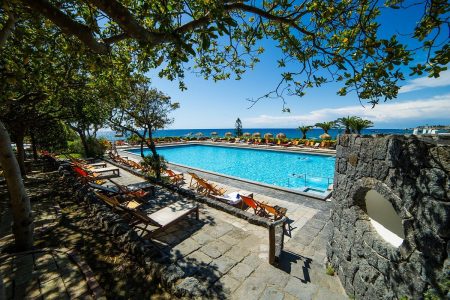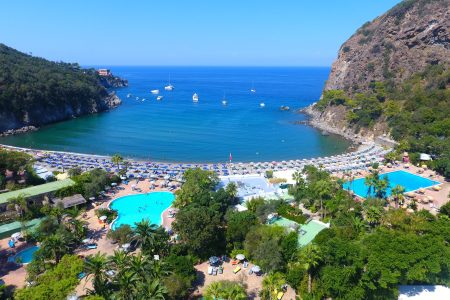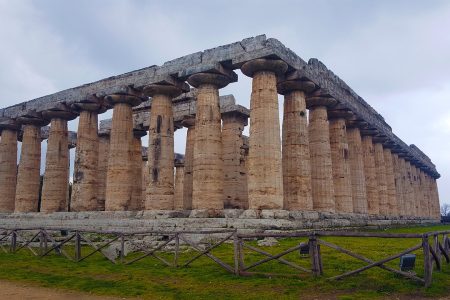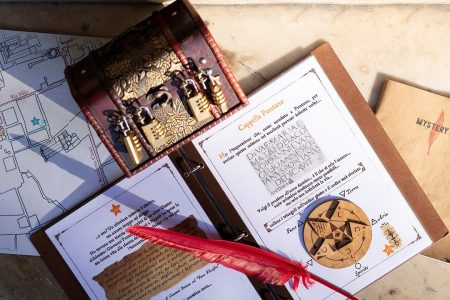Talking about Naples, it is impossible not to think of Totò, aka Antonio de Curtis, who was born and lived in the Neapolitan city for twenty-four years.
Naples and the Sanità District saw Totò from an early age until his first steps in the world of art. His fellow citizens have never turned their backs on him, often taking the opportunity to remember him and pay homage to him. Totò still lives in Naples through the pieces dedicated to him.
Let's start our walking tour with Totò
Leaving the metro at Cavour Square, let's take a look at the magnificent structure of the Naples National Archaeological Museum on our right and then proceed south on Via Foria. After a few meters, it will be enough to turn around to discover the first dedication by the Neapolitans to the Prince de Curtis, a marble plaque placed next to the metro entrance.
Proceeding along Via Foria, we come to the entrance to Sanità District, located on our left. It is difficult to notice it during the day, but there is a shape of Totò made up of many small lights right at the entrance. In the evening, when the lights go on, it is fantastic to observe it, it seems as if Totò opened the door to the house, the doors of Rione Sanità, the neighborhood, which saw him born and grow.
We continue our walk and enter the neighborhood, surrounded by the many sounds, smells, and colors that distinguish it. It seems to immerse yourself in a place detached from the rest of the city, a world in itself.
Totò's house in Via Santa Maria Antesaecula
Totò has grown up in Via Santa Maria Antesaecula, at number 109. To be precise, he was born on the third floor at number 107 on February 15, 1898, but after a few months, he moved with his mother Anna and his loving grandmother Teresa to number 109, where he lived until 1922, and then moved to Rome, where he lived until his death on April 15, 1967.
We immediately notice the balcony of Totò's house, the one next to a marble plaque in his memory, affixed there on July 5, 1978.
A little further on, going up the same road, we notice a niche with a clay bust dedicated to him inside. The work was realized in 1990 by the sculptor Antonio Januario and commissioned the St. Vincent Ferreri Association.
"The Guappo" scene on Guido Amedeo Vitale Street.
Continuing along the entire Via Santa Maria Antesaecula and turning left at the end of the road, we arrive at the Church of Saint Severus Out of Walls. Next to it, we find the famous Chinese Ascent (in English Chinese Climb), named after Priest Matteo Ripa who after having been a missionary in China returned to Rione Sanità bringing with him some Chinese people.
Walking on the Salita Cinesi we arrive at Guido Amedeo Vitale Street. Observing the building that stands in front of us, the film directed in 1954 by De Sica L'oro di Napoli will immediately come to our minds, in particular the scene from "Il Guappo" where Totò plays the "Pazzariello." How to forget him surrounded by partying kids while singing and dancing!
Toto Square and the monolith
Let's go back, walk the Salita Cinesi again and let's go toward Via San Severo arriving in Sanità Square, just like Totò-Pazzariello does in the famous film. From here we continue toward Totò Square, which was dedicated a few years ago to the famous Neapolitan artist.
We pass under the bridge of Santa Teresa degli Scalzi and a little further on we see in front of us a red monolith with an empty center, carved following the shape of Totò, including a bowler hat, perceived by many as the void left by the Neapolitan artist. The master Giuseppe Desiato made this sculpture.
Two famous theaters in Naples are also linked to Totò, the Trianon Theater in the Forcella area, not far from Corso Umberto I, and the Totò Theater, located in Via Cavara. Totò performed at the Trianon Theater shortly before moving to Rome with his family, while at the Totò Theater he never acted but, being not far from the Rione Sanità, in 1996 it was dedicated to him. We conclude our walking tour in the spectacular Church of Santa Maria del Carmine in Market Square, where Toto's funeral was held, attended by many people.
The Principe de Curtis rests in a family chapel at the Cemetery of Santa Maria Wailing.








Hello! I could have sworn I’ve visited this web site before but after going through some of the articles I realized
it’s new How to make money from home during a lockdown (svjsckdd.space) me.
Regardless, I’m certainly happy I came across it and I’ll be
bookmarking it and checking back frequently!